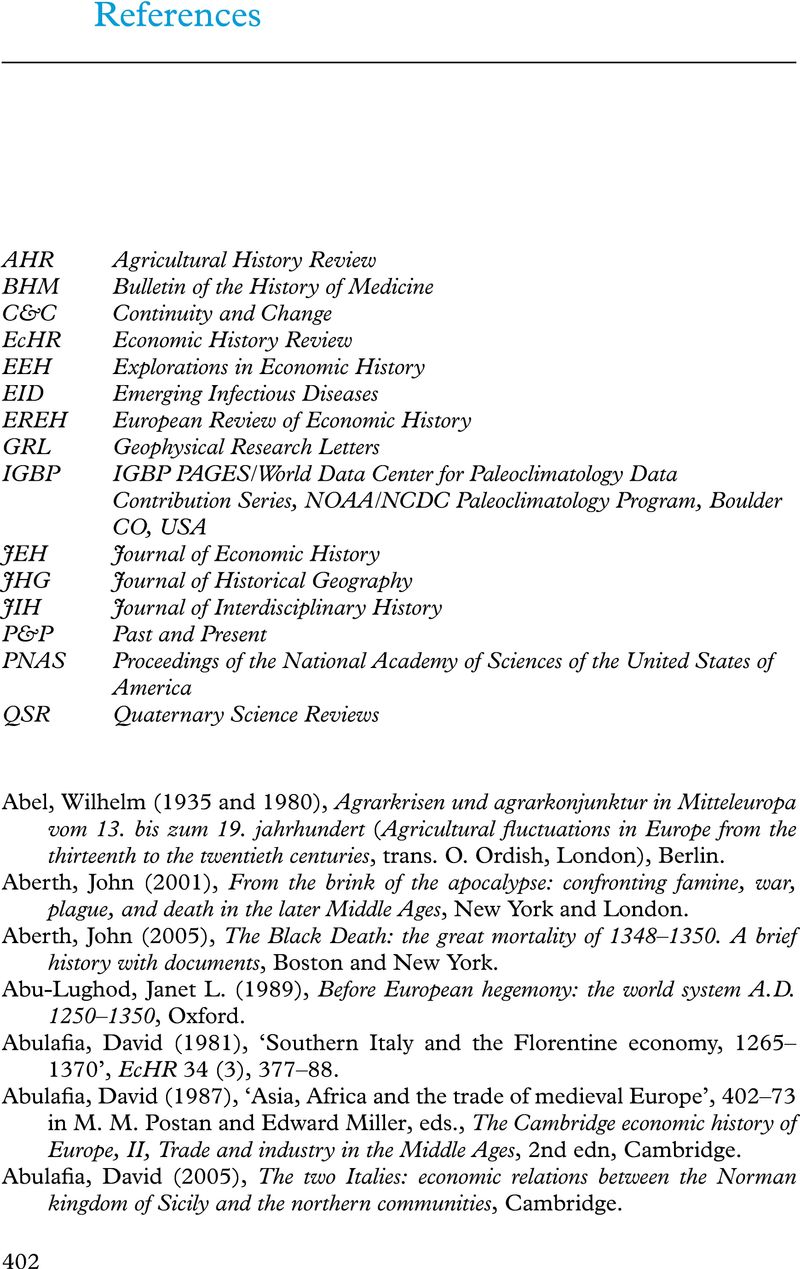Book contents
- The Great Transition
- The Great Transition
- Copyright page
- Dedication
- Contents
- Figures
- Tables
- Preface and acknowledgements
- Abbreviations
- 1 Interactions between nature and society in the late-medieval world
- 2 Efflorescence
- 3 A precarious balance
- 4 Tipping point
- 5 Recession
- Epilogue
- References
- Index
- References
References
Published online by Cambridge University Press: 05 July 2016
- The Great Transition
- The Great Transition
- Copyright page
- Dedication
- Contents
- Figures
- Tables
- Preface and acknowledgements
- Abbreviations
- 1 Interactions between nature and society in the late-medieval world
- 2 Efflorescence
- 3 A precarious balance
- 4 Tipping point
- 5 Recession
- Epilogue
- References
- Index
- References
Summary

- Type
- Chapter
- Information
- The Great TransitionClimate, Disease and Society in the Late-Medieval World, pp. 402 - 447Publisher: Cambridge University PressPrint publication year: 2016



